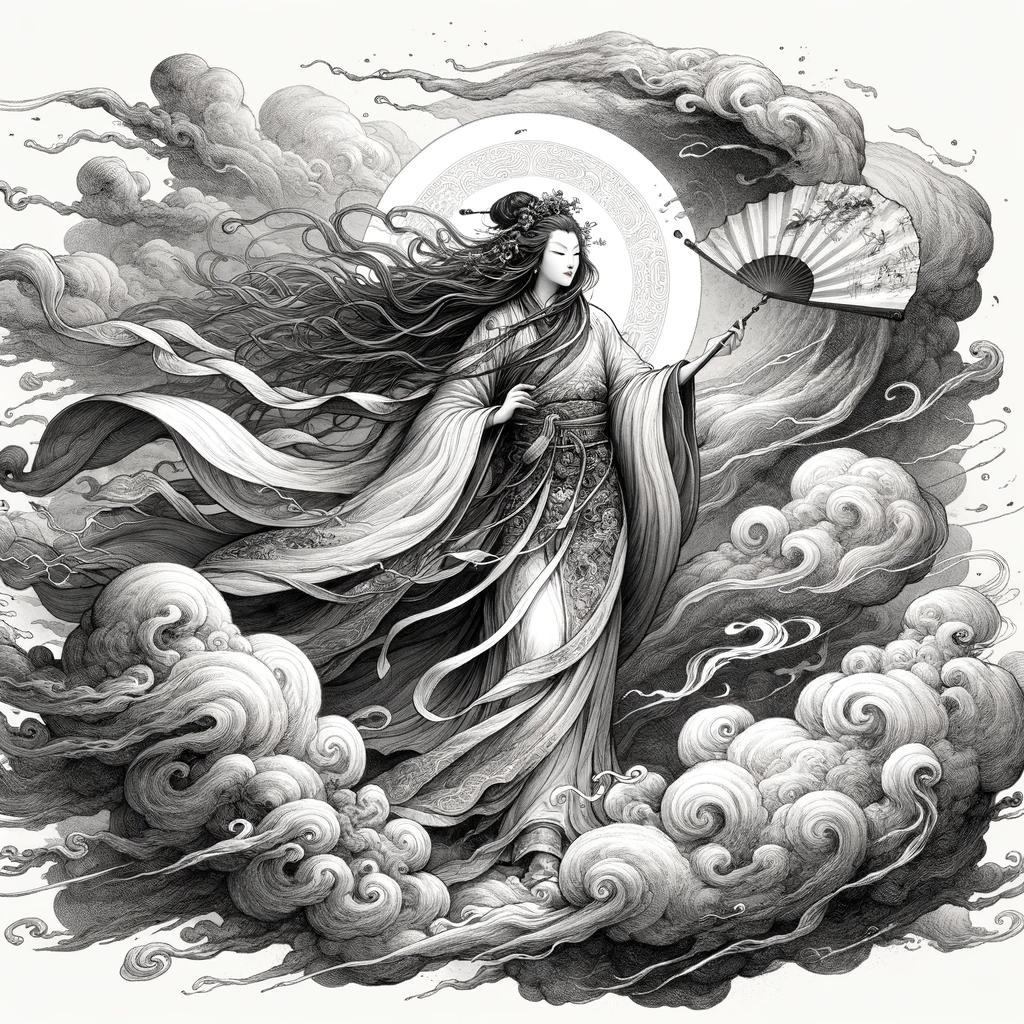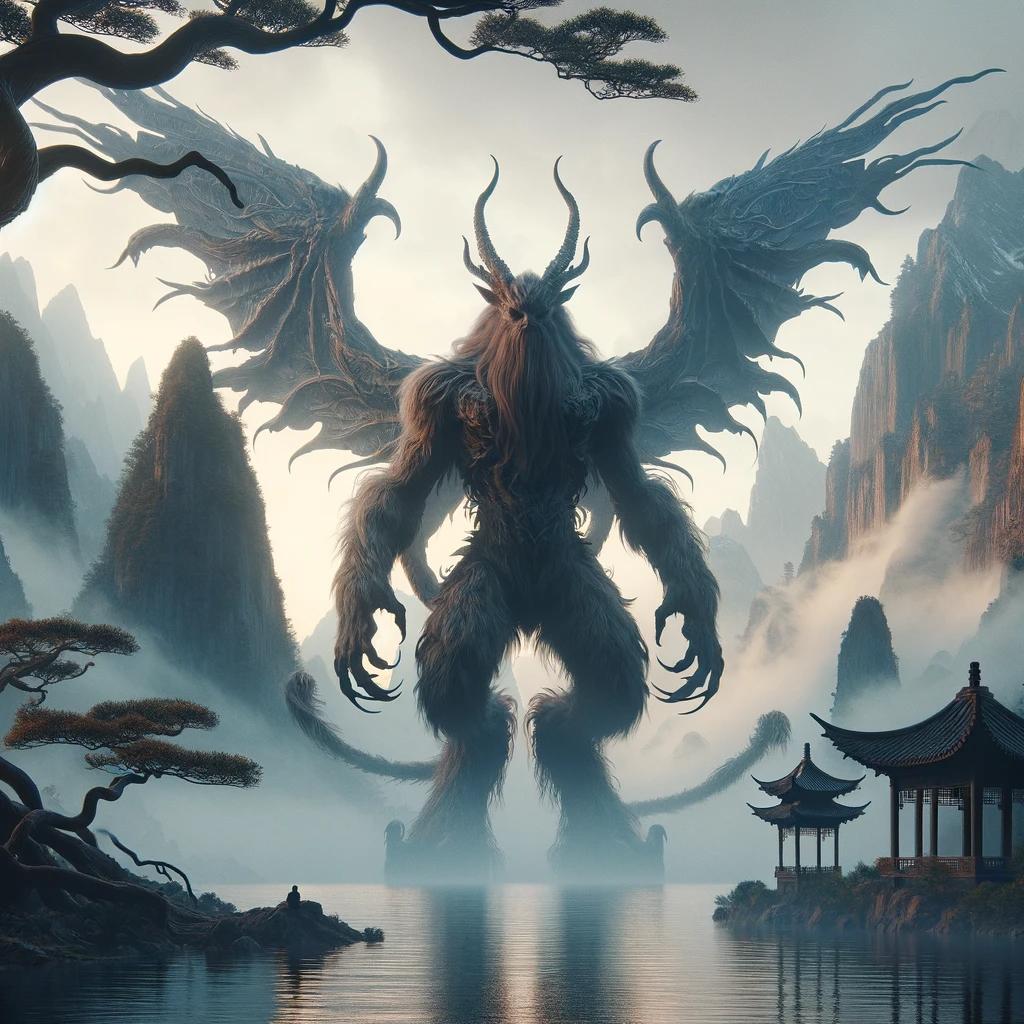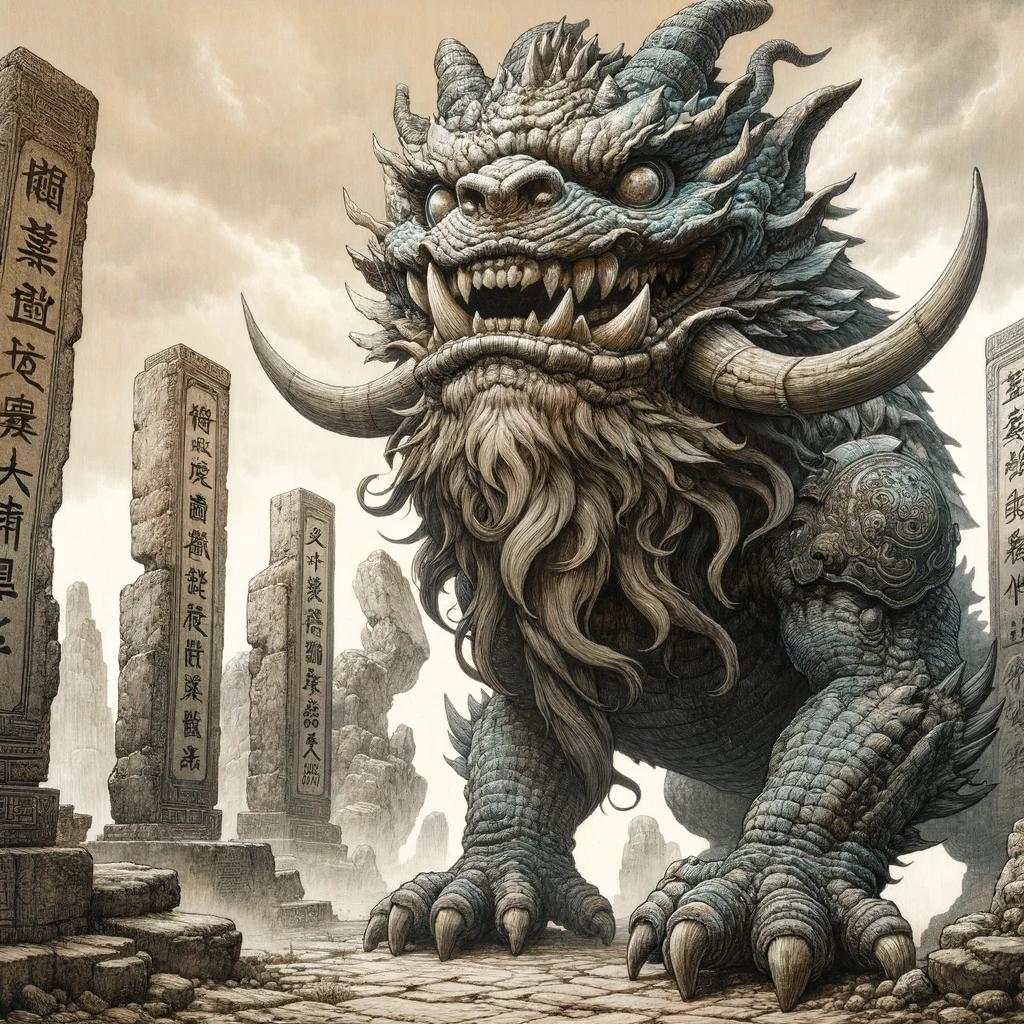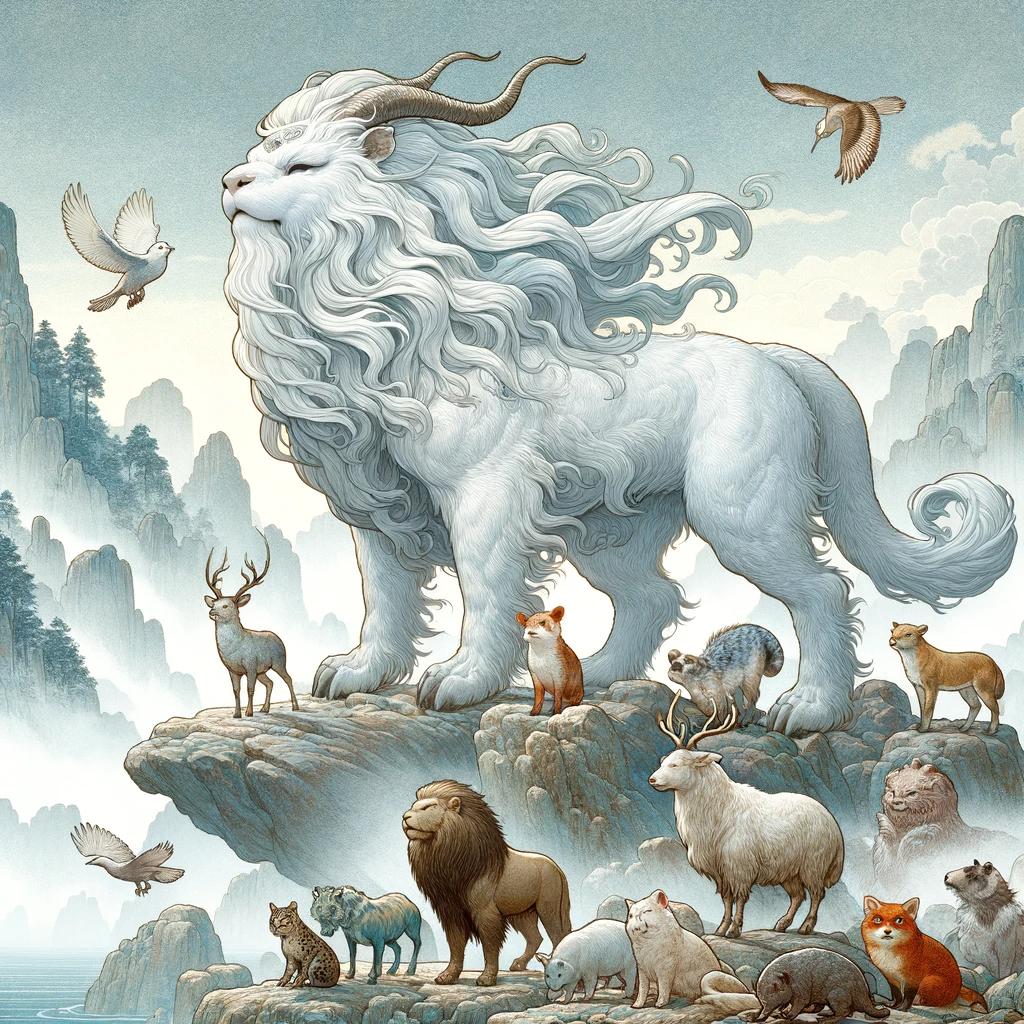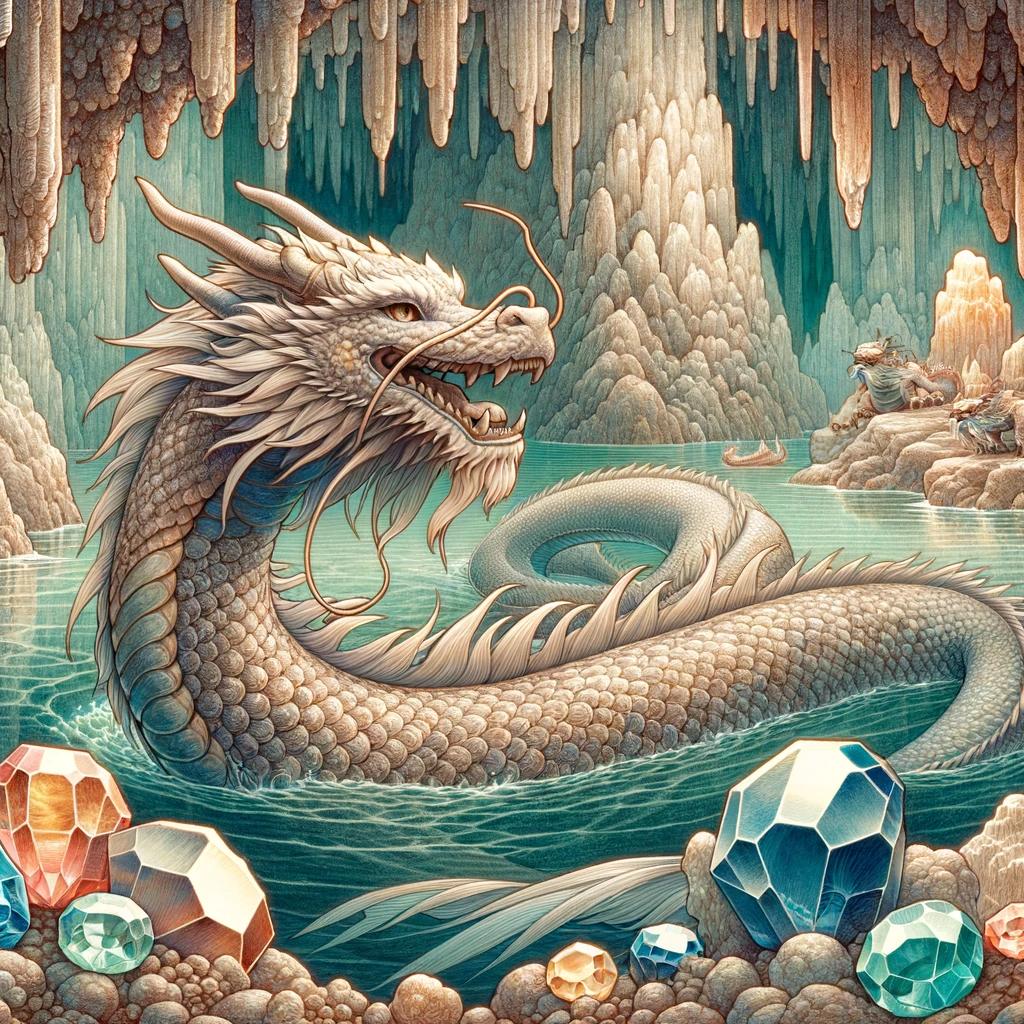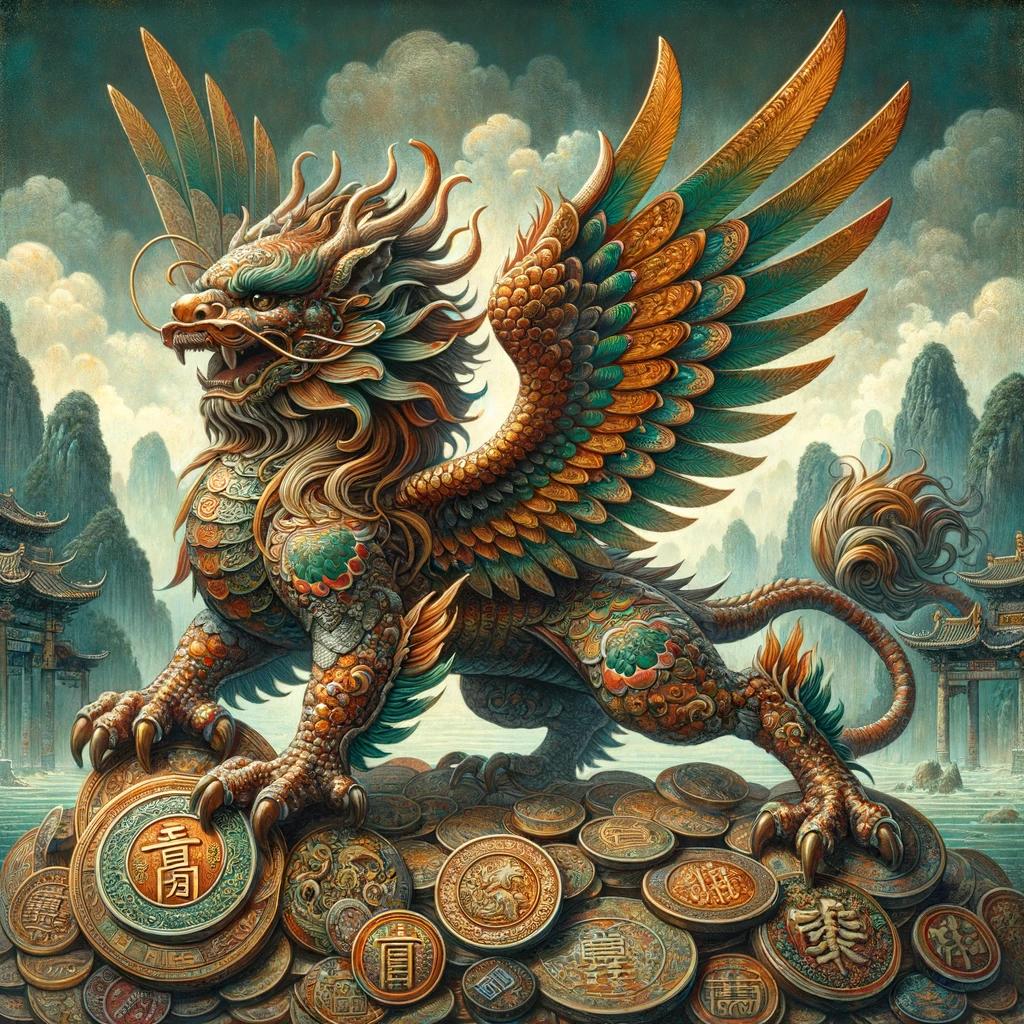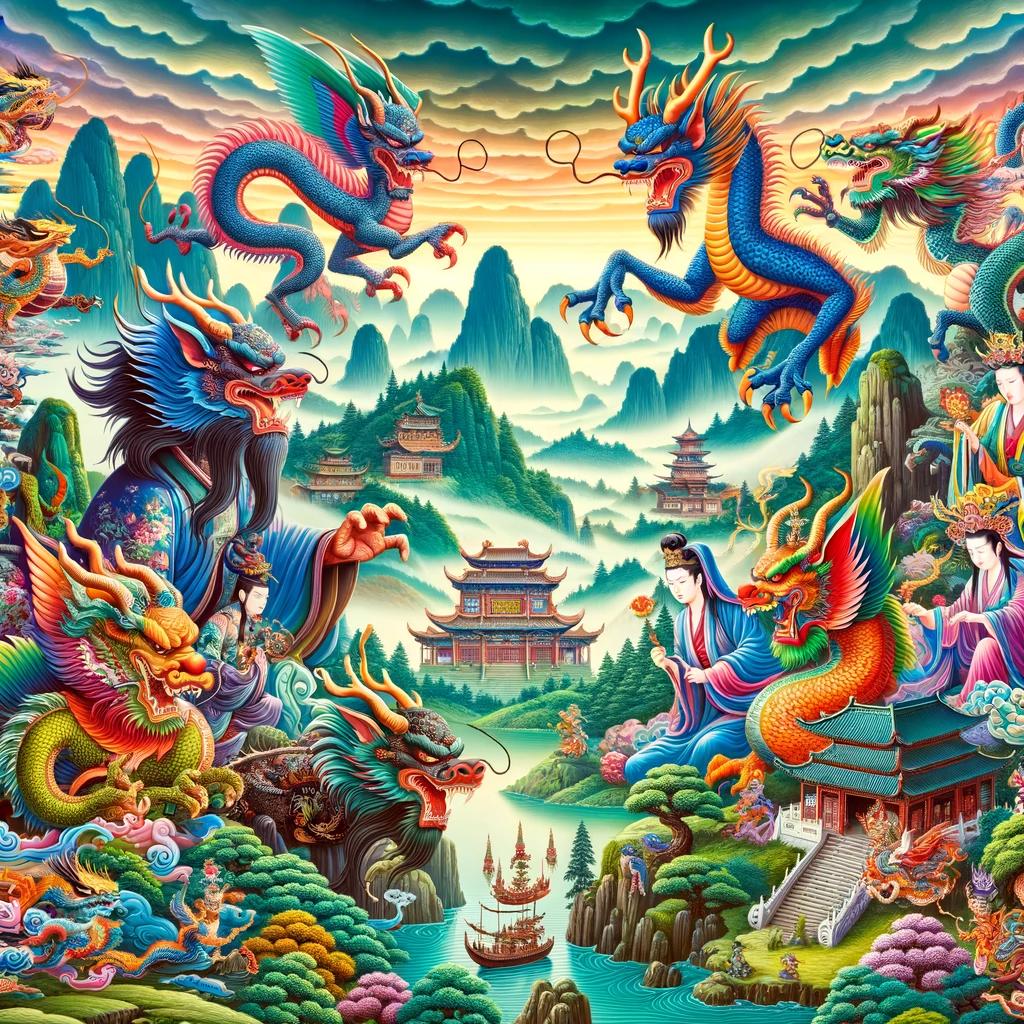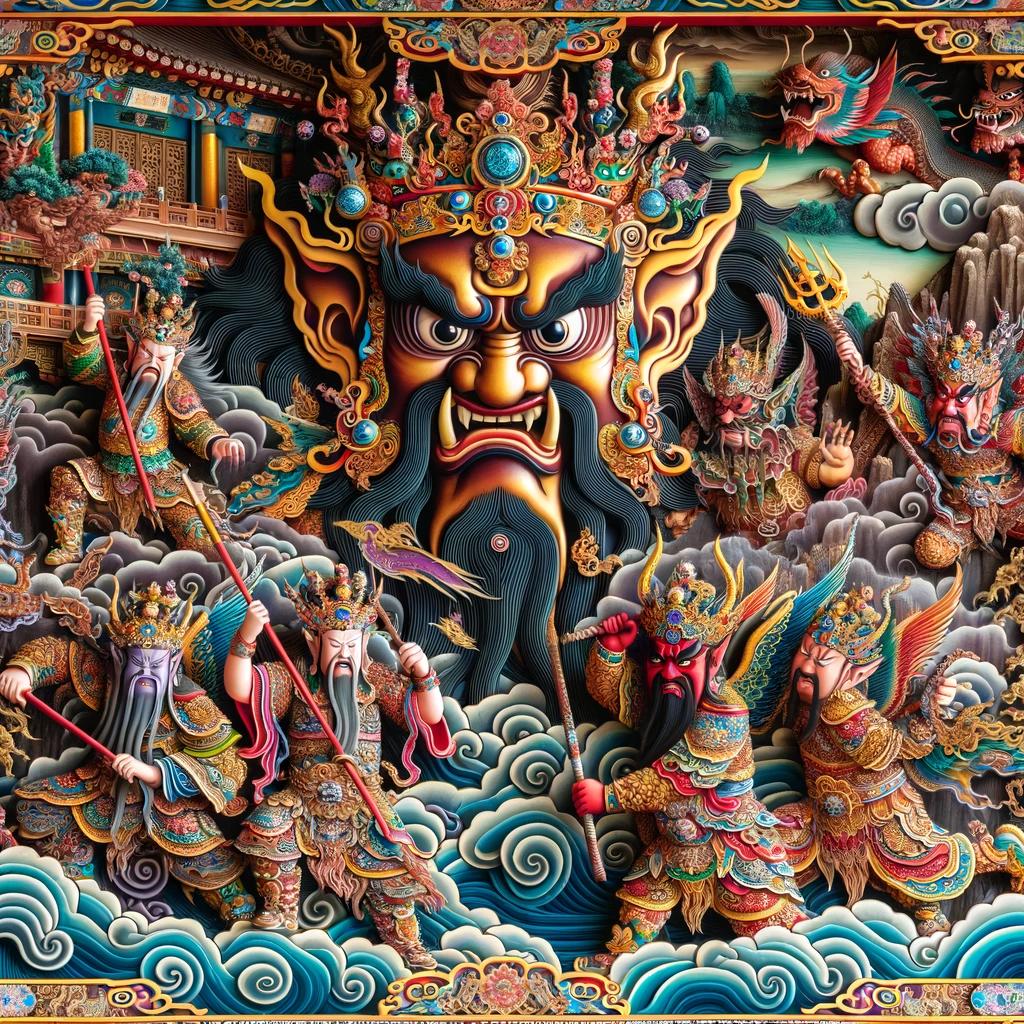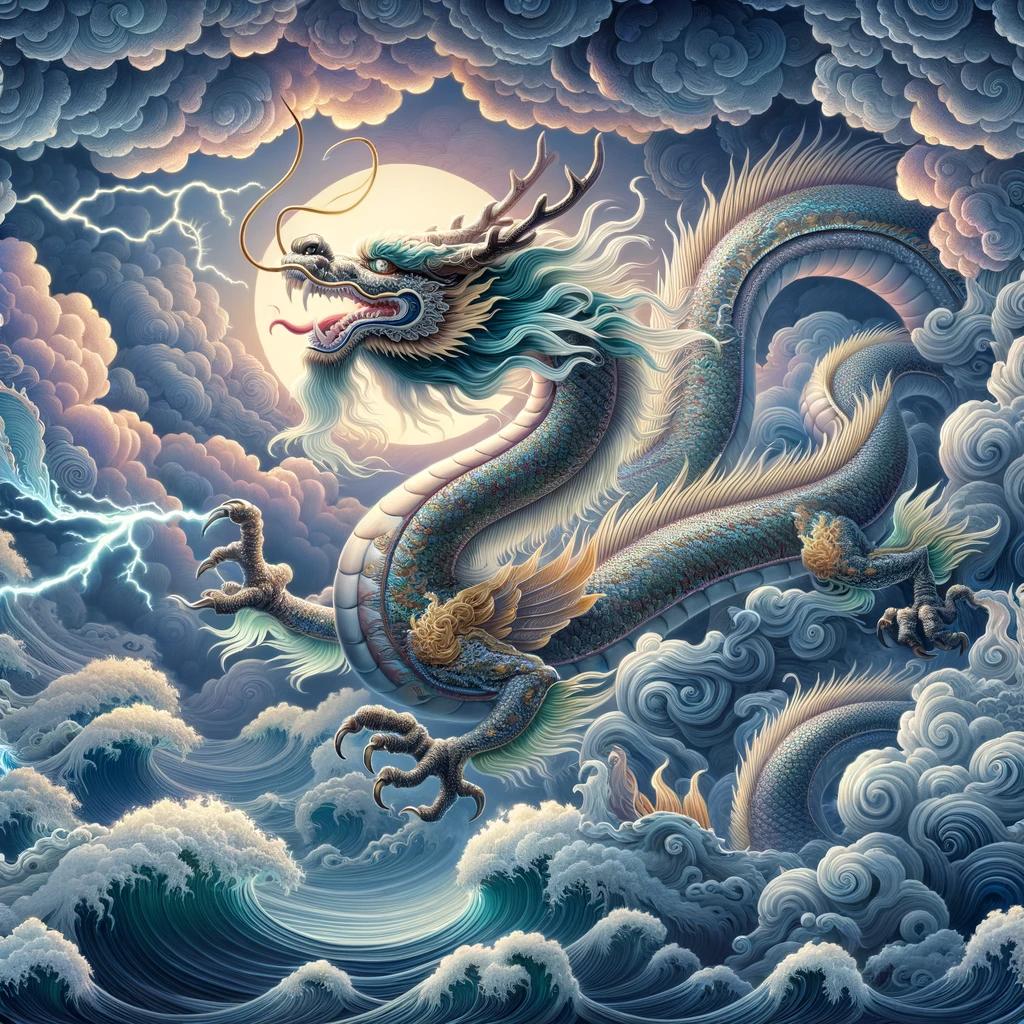Fei Lian Chinese Mythology: Unveiling the Intriguing Deity and Legends
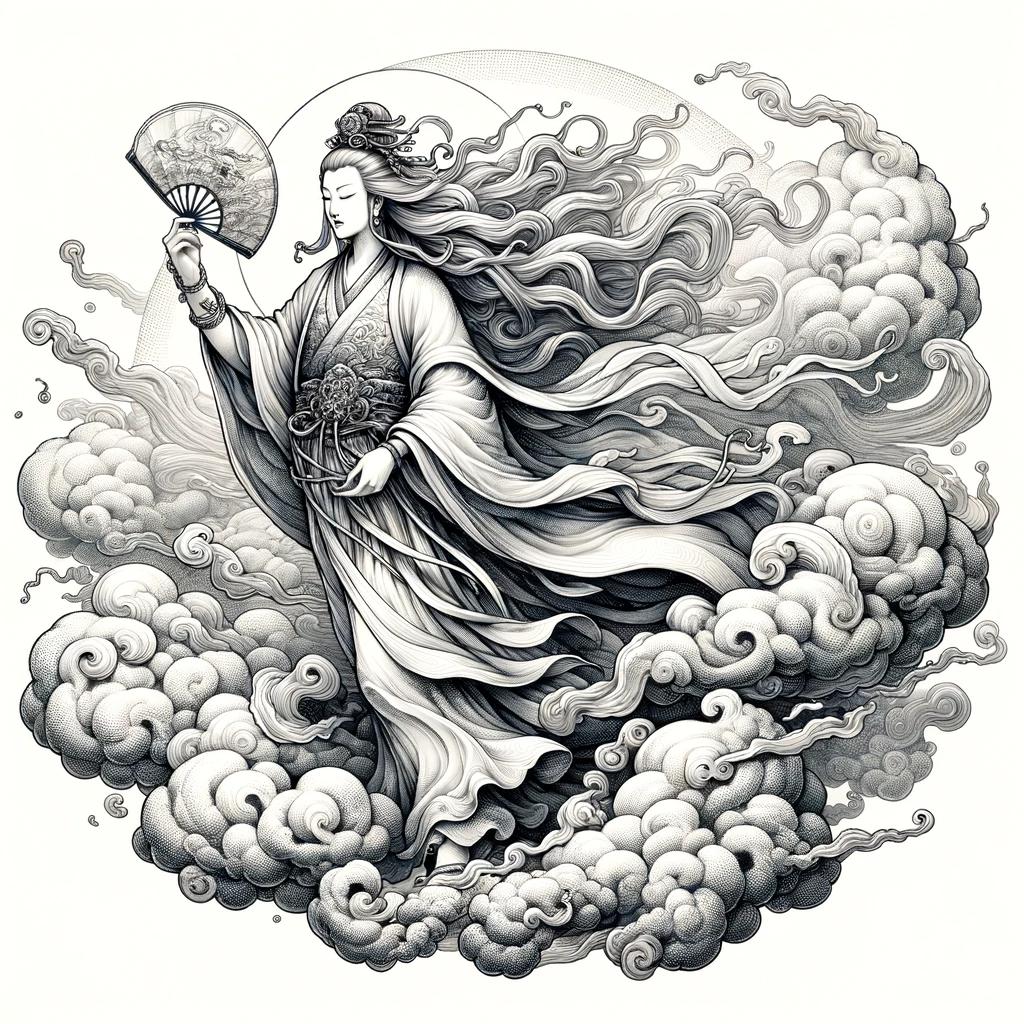
Fei Lian Chinese mythology is a captivating aspect of ancient Chinese folklore. This deity, known as the god of wind, holds a unique and mystifying place in Chinese mythology.
With limited details available about Fei Lian, we explore the significance of his appearance and delve into legendary stories surrounding his attempted coup against Emperor Huangdi. This article unravels the enigmatic traits of Fei Lian’s composite creature form and the symbolic nature of his mythical bag of wind.
Join us on a journey through Fei Lian’s mythology, its cultural influences, and unanswered questions that continue to intrigue researchers and enthusiasts.
This introduction provides a brief overview of the article, highlighting the key topics covered while capturing the curiosity of readers interested in Fei Lian Chinese mythology.
Overview of Fei Lian Chinese Mythology
Fei Lian Chinese Mythology encompasses a rich tapestry of intriguing stories and enigmatic beliefs. In this comprehensive overview, we delve into the significance of Fei Lian, a mythical figure renowned as the god of wind in ancient Chinese culture.
Through an exploration of Fei Lian’s introduction, his significance in Chinese mythology, and the mysteries surrounding his appearance, we uncover the captivating world of this important deity.
Introduction to Fei Lian
Fei Lian emerges as a captivating character in Chinese mythology, revered as the god of wind with a unique and captivating persona.
While precise details about his origins remain scarce, various texts provide glimpses into his importance and distinctive characteristics. From his representation as a dragon or other extraordinary creature to his ability to take human form, Fei Lian’s enigmatic nature sets the stage for the captivating myths and legends that surround him.
Significance of Fei Lian in Chinese Mythology
Fei Lian holds a prominent position in Chinese mythology, representing the forces of wind and weather. He is believed to possess extraordinary powers that bring about storms, gentle breezes, and everything in between.
This section explores the profound impact of Fei Lian’s presence in Chinese culture, including his association with royalty, his role as a catalyst for change, and the symbolism attached to his mythical bag of wind, hinting at the intricate relationship between Fei Lian and the natural world.
The Mystery Surrounding Fei Lian’s Appearance
Fei Lian’s appearance is veiled in mystery, with various descriptions offering intriguing insights into his unique attributes. Accounts portray him as a creature of hybrid nature, adorned with distinctive features such as bull horns on his head, a sparrow-shaped face, deer-like body and legs, and leopard-like spots.
The presence of a serpent tail completes his extraordinary appearance. This section delves into the enigmatic aspects of Fei Lian’s physical form, leaving room for speculation and contemplation about the symbolic meaning behind his composite creature attributes.
Legends and Stories of Fei Lian
Fei Lian, the Chinese deity of wind, has fascinating legends and stories associated with his name. Let’s explore some of the gripping tales that surround this mythical figure.
Fei Lian’s Attempted Coup against Emperor Huangdi
One of the most prominent legends recounts Fei Lian’s audacious plot to overthrow the iconic Emperor Huangdi.
Collaborating with the rain god, Fei Lian sought to seize power, but their rebellion was swiftly crushed by the emperor’s daughter. Her valiant efforts resulted in Fei Lian’s banishment to a mountain cave, where he was to face the consequences of his treachery.
Fei Lian’s Exile and Subsequent Troubles
Despite his exile, Fei Lian continued to cause mischief even from his imprisonment. His malevolent reign persisted until the celestial archer, known as Yi, confronted him. Yi effectively halted Fei Lian’s nefarious activities by piercing the wind bag that the deity carried, releasing chaos into the wind.
The Defeat of Fei Lian by the Celestial Archer
Fei Lian’s reign of disturbance was ultimately brought to an end by Yi’s intervention. With a precise arrow, Yi ruptured Fei Lian’s wind bag, dispersing its contents and putting an end to the troubles caused by the mischievous deity.
Whether Fei Lian ever managed to repair his wind bag and regain his power remains a mystery to this day.
The Unique Characteristics of Fei Lian
Fei Lian, the Chinese god of wind, possesses distinct and fascinating characteristics that set him apart in Chinese mythology.
Description of Fei Lian’s Appearance
Fei Lian is depicted in various texts with a truly singular appearance. Some sources describe him as a dragon, while others portray him as an even more peculiar creature. He is said to have a sparrow-shaped head adorned with bull-like horns, a body and legs resembling a deer, and leopard spots.
His distinctive feature is a serpent tail, which contributes to his truly unique appearance.
The Symbolism of Fei Lian’s Composite Creature Traits
The composite creature traits attributed to Fei Lian hold symbolic significance within Chinese mythology. The combination of different animal features in his appearance represents a fusion of various elemental forces and natural powers.
Fei Lian’s composite form reflects his role as a deity who controls and influences the winds, drawing upon the strength and attributes of diverse animals.
The Mythical Bag of Wind Carried by Fei Lian
Fei Lian is often depicted carrying a mythical bag of wind, which he wields to release gusts and unleash the power of the winds.
Much like the bag of Aeolus from Greek mythology, Fei Lian’s bag, made of goat skin, contains and controls the mighty forces of the wind. It is through this ancient artifact that Fei Lian exerts his influence, both benevolent and destructive, on the natural world.
Fei Lian’s Influence on Chinese Culture
Fei Lian in Chinese Art and Literature
Fei Lian’s presence in Chinese art and literature is evident throughout history, showcasing the lasting impact of this enigmatic deity. In traditional paintings, Fei Lian is often depicted as a powerful figure wielding the forces of wind, with vibrant colors and intricate details capturing the imagination.
In literature, Fei Lian’s character is woven into epic stories and poems, where his fierce nature and unpredictable winds symbolize both chaos and change.
Fei Lian’s Role in Weather and Wind Beliefs
Fei Lian’s association with wind has made him a central figure in Chinese weather and wind beliefs.
In ancient times, people believed that Fei Lian controlled the winds, and rituals and prayers were conducted to appease him and ensure favorable weather conditions. Even today, Fei Lian’s influence can be seen in the belief that certain winds carry different meanings and portents, affecting agricultural activities and daily life.
Fei Lian’s Association with Other Mythical Creatures in Chinese Mythology
- Dragons: Fei Lian’s resemblance to a dragon in some descriptions indicates a connection to these legendary creatures. Dragons symbolize power, wisdom, and good fortune, and their association with Fei Lian adds another layer of significance to his role as the god of wind.
- Phoenix: In Chinese mythology, the phoenix represents rebirth and immortality.
Fei Lian’s influence on wind patterns and his distinctive appearance make him closely associated with this mythical bird, creating a fascinating connection between the two powerful entities.
- Tortoise and Serpent: Fei Lian’s composite creature traits, including a snake tail, reflect his connection to these animals in Chinese mythology.
The tortoise symbolizes longevity and wisdom, while the serpent represents transformation and primal energy. Fei Lian’s combination of these traits adds depth to his character and his role in Chinese folklore.
In conclusion, Fei Lian’s influence on Chinese culture is multifaceted and captivating.
From his portrayal in art and literature to his association with weather beliefs and mythical creatures, Fei Lian’s legacy continues to resonate in the cultural fabric of China. He remains an enigmatic figure whose influence reaches far beyond his role as the god of wind.
The Legacy of Fei Lian in Modern Culture
Fei Lian, the legendary Chinese wind god, continues to leave a lasting impact on contemporary culture, particularly in relation to Chinese mythology. This section explores the various ways in which Fei Lian’s presence can be seen and felt in modern society.
Fei Lian’s Popularity in Contemporary Chinese Mythological Fiction
Fei Lian’s captivating mythology has inspired numerous works of contemporary Chinese mythological fiction. Authors and storytellers continue to weave tales featuring Fei Lian, keeping his character alive and introducing him to new generations.
These works provide a platform for exploring Fei Lian’s complex nature and the rich tapestry of Chinese mythology.
Fei Lian’s Influence on Elemental and Wind-based Characters in Popular Media
Fei Lian’s mythos has seeped into popular media, leaving its mark on various forms of entertainment. Elemental and wind-based characters in movies, TV shows, and video games often draw inspiration from Fei Lian’s unique attributes.
This influence highlights the enduring appeal and recognition of Fei Lian’s role as a deity linked to natural forces.
Fei Lian’s Continued Presence in Chinese Folklore and Festivals
Fei Lian’s significance extends beyond fictional representations into the realm of cultural traditions. In Chinese folklore, Fei Lian remains a prominent figure, hailed for his connection to wind and weather. Additionally, festivals and celebrations rooted in Chinese mythology often incorporate Fei Lian’s presence, showcasing his enduring relevance and the important role he plays in community traditions.
As we examine the legacy of Fei Lian in modern culture, it becomes evident that his mythological presence continues to resonate and inspire creative endeavors. Whether through literature, entertainment, or cultural practices, Fei Lian’s influence remains steadfast, captivating the imagination of both Chinese and global audiences.
Unanswered Questions and Speculations Surrounding Fei Lian
As we explore the myths and legends surrounding Fei Lian, intriguing questions and speculations arise. While there may be limited information available about this enigmatic deity, we can delve into the mysteries and ponder the following:
Could Fei Lian Repair His Bag of Wind?
One unresolved question regarding Fei Lian’s fate is whether he was able to repair his bag of wind and regain his power.
Despite the intervention of the celestial archer, Yi, who pierced the bag and scattered the winds, the ultimate fate of the bag remains unclear. Did Fei Lian possess the knowledge or resources to mend his crucial possession and potentially unleash havoc once again?
The Existence of Other Fei Lian-like Creatures in Chinese Mythology
While Fei Lian stands out as a unique deity, it is worth considering whether there are other creatures in Chinese mythology with similar traits or roles.
Are there mythical beings with composite characteristics akin to Fei Lian’s appearance? Exploring this possibility could uncover fascinating connections and shed light on the symbolism associated with these creatures.
Exploring Different Interpretations and Perspectives on Fei Lian’s Mythology
Fei Lian’s mythology offers room for interpretation and various perspectives.
Scholars, researchers, and enthusiasts can delve into different cultural and symbolic analyses to uncover hidden meanings within the mythology. By examining diverse viewpoints, we can gain a deeper understanding of Fei Lian’s significance and his place in broader Chinese folklore.
.

